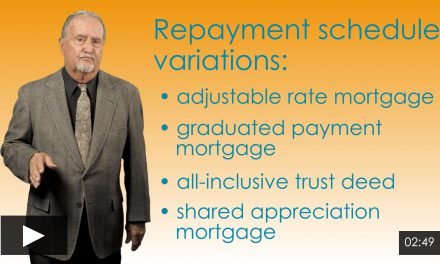This article discusses the loan application process leading up to a lender’s denial of credit to a homebuyer, and explains the steps the buyer’s selling agent can take to help avoid it.
As lenders gain ever more control over the real estate marketplace, the selling agent (the homebuyer’s paid representative and advisor) is regaining responsibilities that fell out of fashion during the Millennium Boom. In the past, mortgage loan brokers (MLBs) arranged the buyer’s purchase-assist loan on one-to-four unit residential property. These Real Estate Settlement Procedures Act (RESPA)-controlled MLBs have now been effectively eliminated by the will of institutional lenders and federal legislation, expressed in the Secure and Fair Enforcement for Mortgage Licensing Act of 2008 (the “SAFE” Act).
The selling agent is thus the only remaining person with the knowledge and motivation to help his buyer locate a lender who will make the necessary single family residence (SFR) purchase-assist loan on the best terms available. With MLBs nearly out of the RESPA loan scenario, the buyer’s selling agent is becoming the buyer’s only advocate in the search for purchase-assist financing to fund escrow and close.
The gatekeeper role of the buyer’s agent, called a “transaction agent” (TA) by lenders, obliges him to help his buyer obtain financing, a necessary step in the purchase of a home. To meet that obligation and see the transaction through to closing, the agent needs to have sufficient knowledge of the lender’s loan processing conduct and possess real-world experience dealing with lenders.
A capable buyer’s agent will give step-by-step advice about the loan application process, pick out the lenders who make the least costly loans, and discuss the various loan terms available and their merits. The agent’s advice begins before a property is ever located, when the agent directs his buyer to obtain letters of pre-approval for home financing, preferably from two or more lenders—never just one. [For more on the transaction agent’s role in the pre-approval and application process, see first tuesday’s May 2009 article: Loan Applications Initiate the Loan Process; also see first tuesday Form 320]
In the boom years leading up to the 2008 financial crisis, the pre-approval letter was more of a luxury than a necessity. Thanks to hugely relaxed (and often ignored) regulations on lenders and overly energetic government policies encouraging increased homeownership, mortgage credit was available to everyone who was interested in taking ownership of their shelter. Now that we are in the heart of our first financial crisis in 75 years, lenders are transitioning from panic about the present to simple fear about their future. At the moment, mortgage money is scarce (and is about to become a little more expensive), and will remain available to only the most qualified homebuyers until lenders and the mortgage backed bond market regain their financial footing.
In the second decade of this new millennium, a buyer’s agent cannot afford to invest his time trying to locate a suitable residence for just any casual would-be buyer; all prospective buyers must first be pre-approved by multiple lenders. In the absence of lender pre-approval, the buyer’s agent proceeds without any certainty about the loan amount available to his buyer. Lacking loan information, the agent is hamstrung and misdirected from the start, since he must resort to guesswork to determine what price range of homes the buyer can afford.
The loan amount pre-approved by the lender is determined by a simple formula based on the current mortgage rate, the buyer’s gross income, and readily available credit information (a “soft check” of credit). All this is accomplished in a 30 to 60 minute meeting with an institutional lender’s loan officer. If the buyer is dissatisfied with the pre-approval offers he gets, or if he is rejected by a lender, the buyer’s agent should simply shepherd his client to a more receptive lender—there is always a lender who will make the desired loan, at one rate or another. Only by getting multiple quotes can the agent be assured his buyer is receiving the best mortgage terms currently available. [For current and historical mortgage rates, see first tuesday’s Rates Page]
After suitable property has been located, a purchase offer made and accepted and escrow opened, it is time for the homebuyer to submit a loan application to the selected lender. The application triggers the lender’s “hard credit check,” and involves a much more thorough verification of credit information than the soft check previously undertaken for pre-approval. If the process proceeds as expected, the homebuyer will be swiftly approved for the amount he was led to anticipate by his pre-approval letter. If not, the complications must be quickly dealt with by the buyer’s agent, with one eye fixed on resolution of the current application and the other looking ahead to the possible need for an alternate lender.
If the agent is to be alerted to any difficulties the lender experiences in the loan process, and thus be able to help the buyer resolve them, the homebuyer must authorize the lender to work with his agent. This authorization permits the agent to police the application from start to finish.
However, the buyer’s agent is not permitted to receive a fee or other monetary benefit from the lender or MLB for his referral and participation on behalf of the buyer in the loan process. These services are provided as part of the agent’s handling of the home purchase transaction in his role as the agent of the buyer.
Determining homebuyer eligibility for the loan
Once the homebuyer has submitted all the information necessary for the lender to decide whether to approve or disapprove the loan, the application is considered complete. The lender then has a maximum of thirty days to advise the buyer of the its decision on the application—acceptance, denial, or a counteroffer to lend on different terms. [12 Code of Federal Regulations §202.9(a)(i)]
In both the pre-approval and the later loan application approval process, the lender’s determination of the optimal amount of financing will be based upon pre-set expense-to-income ratios. For example, the Department of Housing and Urban Development (HUD) and the Federal Housing Administration (FHA) set the ratio of loan payments to gross income at no more than 31% (that is, the FHA does not insure any home loan requiring the buyer to pay more than 31% of his gross income on the loan and the accompanying mortgage insurance premium). The ratio of total expenses to gross income may not exceed 43%. [HUD Handbook 4155.1 Rev-5 Ch-4 § F.2]
Also, lenders are keen to investigate the buyer’s historical willingness to pay, as evidenced by his credit history—especially the history indicated by his credit score set forth in a credit report. When the lender relies on a credit score in any way to determine whether to make a loan, the homebuyer must be notified of the credit score, given a copy of the credit report and given the contact information for the credit bureau which provided the report and score. All credit score information is delivered to the homebuyer before the lender makes a decision on the loan application. [United States Code §1681(g); See first tuesday Form 227]
Institutional lenders generally maintain the ratio of mortgage payment to gross income at 31%, and the ratio of total household expenses (including personal expenses for household maintenance) to gross income at 40%—the maximum amount a responsible landlord would permit a tenant to pay for rent.
Supplemental information to establish credit
In addition to credit information, the lender is likely to request supplemental information to clarify his picture of the buyer’s debts. Information the homebuyer will submit at the lender’s request includes:
- the homebuyer’s payment history on an existing note;
- a “Homebuyer’s Financial Statement Form” and a “Balance Sheet Financial Statement,” if he is self-employed. On these forms the self-employed homebuyer spells out all of his assets and liabilities, giving a comprehensive picture of his fiscal situation [first tuesday Forms 207, 207-1];
- a “Request for Verification of Employment,” to be submitted directly to the homebuyer’s employer. This form confirms the homebuyer’s own depiction of his income, and shows his earnings over the past four years [first tuesday Form 208];
- verification of the homebuyer’s deposits by his respective depositories. Lenders will want a record of the types of accounts the homebuyer possesses, the balance of those accounts, and a history of the average balance over the preceding two months. This information will also include the buyer’s loan history; both outstanding loans and loans already paid in full [first tuesday Form 209];
- information from the homebuyer’s current landlord or property manager confirming how long the homebuyer has occupied his current residence and how diligent he has been in paying his rent [first tuesday Form 210]; and
- information obtained directly from the buyer’s creditors confirming the homebuyer’s accounts and his progress in paying them, as well as the homebuyer’s payment history over the past 12 months and the current interest rates charged on the accounts. [first tuesday Form 212]
If the buyer’s agent suspects that the buyer lacks an optimal credit score, or if the above items depict the buyer unflatteringly, he should draw the lender’s attention to alternative positive indicators of credit, such as the homebuyer’s payment history on debts not listed on the credit report, or even have the homebuyer submit a Derogatory Credit Explanation Letter explaining the reasons for each item of negative credit information on the report. [See first tuesday Form 217-1; For more information regarding the Derogatory Credit Explanation Letter, see the January 2010 first tuesday Form of the Month]
The last step: Denial of Credit
Lenders hate to lose an opportunity to make a loan. When the homebuyer does not meet the lender’s pre-set standards, the lender will often offer a loan on different terms than the loan applied for, called a counter-offer. This technically is a form of denial, since the lender by the counteroffer has rejected the loan on the terms requested in the homebuyer’s application.
On receipt of the lender’s counteroffer, the homebuyer has 90 days to accept the terms for the loan offered. If the homebuyer rejects the offer, or fails to accept it within 90 days, the lender is forced to hand the homebuyer a notice of denial of credit (unless the homebuyer has accepted a loan offer from a different lender). [12 CFR §202.9(a)(iv), §202.9(g); See first tuesday’s March 2010 Form of the Month article: Denial of Credit]
When more than one loan applicant is listed on the application, the lender will notify only the primary applicant named. [12 CFR §202.9(f)]
The notification of denial will indicate the specific cause of rejection. The rejection cannot be based on any of the procedures, conduct, systems or methods used by the lender or its representatives. A denial of credit is borrower-based; related to the applicant’s ability and propensity to pay his debts. The reasons given for denial are likely to be the homebuyer’s:
- delinquent payment of loan or credit obligations;
- inadequate references given to the lender to establish credit;
- derogatory trade references; or
- the failure of the applicant’s references to respond to the lender’s verification requests.
The form of the notification will vary depending upon the reason for denial. If it is based on information contained in the buyer’s credit report, the lender will provide the buyer with:
- written notice of the denial of credit;
- a statement that the lender’s decision to take adverse action was based on the credit report, including the name, address and phone number of the credit reporting agency which issued the report; and
- a notice detailing the buyer’s right to:
- obtain a free copy of his credit report from any national credit reporting agency within 60 days; and
- dispute the accuracy or completeness of any info in the credit report. [CC §1785.20; see first tuesday Form 219]
If the homebuyer suspects any errors or inaccuracies in his credit report, he may seek to correct them and continue to pursue a loan from the lender. However, loan underwriters have been historically unwilling to reverse a denial of credit decision, and the lender’s denial is almost always final.
If the lender denies credit to the homebuyer based on information about his creditworthiness provided by a person other than a credit reporting agency (for instance, the applicant’s employer or landlord), the lender will either:
- provide the buyer with a written explanation of the specific reasons for the denial of credit; [See first tuesday Form 217-1] or
- provide the buyer with a written notice explaining the buyer’s right to request such an explanation for the denial from the lender. [See first tuesday Form 219]
The buyer who submits a written request for the reason of his denial of credit within 60 days after receiving notice of denial of credit will receive a disclosure from the lender listing all pertinent credit information. [CA Civil Code (CC) §1787]
At this point, the buyer still has one faint chance of obtaining the loan he desires from the original lender (although a prudent buyer will have a backup application in process with another lender, and will concurrently pursue a loan from that source). If the selling agent determines that the homebuyer has a chance of swaying the lender, he can advise his client to submit a Derogatory Credit Explanation Letter to the lender explaining any extenuating circumstances behind the negative information on his credit report and requesting that the lender review his material a second time. [See first tuesday Form 217-1]
The denial of credit procedure is seldom pleasant, but for lenders it is nothing more (or less) than their job. By obtaining multiple pre-approvals before searching for a suitable residence to purchase, and then applying to two or more lenders upon contracting to purchase a residence, the buyer is able to locate the best-possible loan and obtain the necessary funds to close escrow. The homebuyer and his agent are thus able to complete the purchase and close escrow without any surprises or hindrance from the lenders.



















